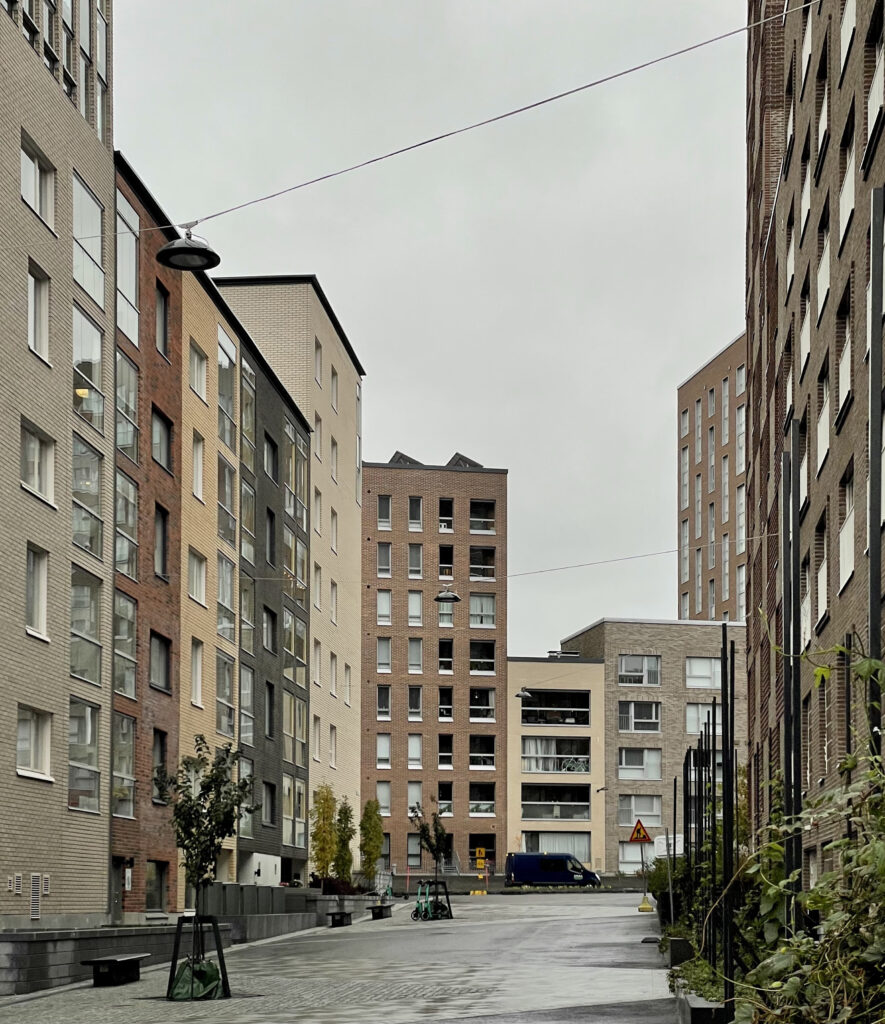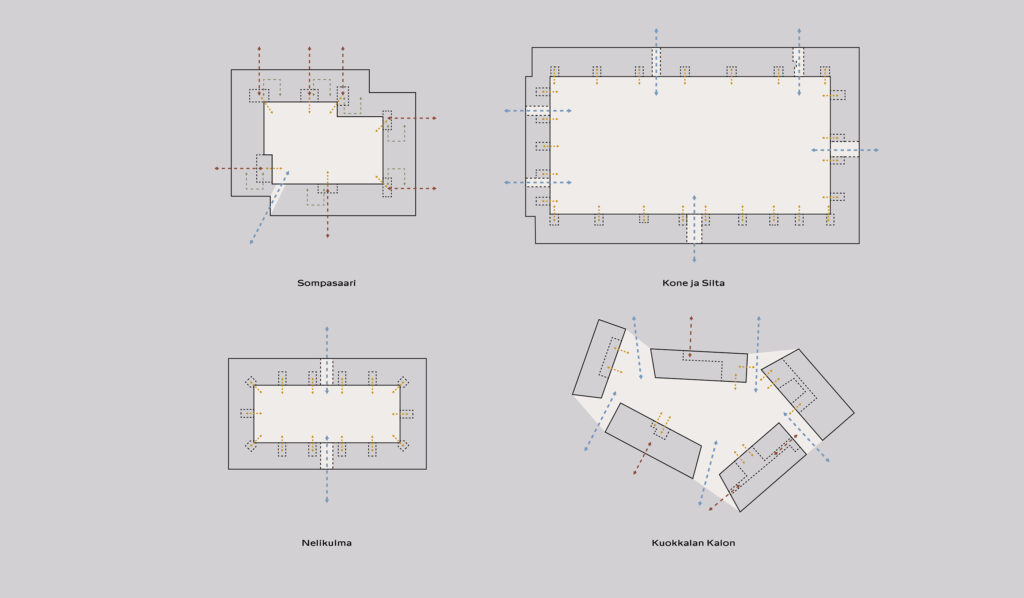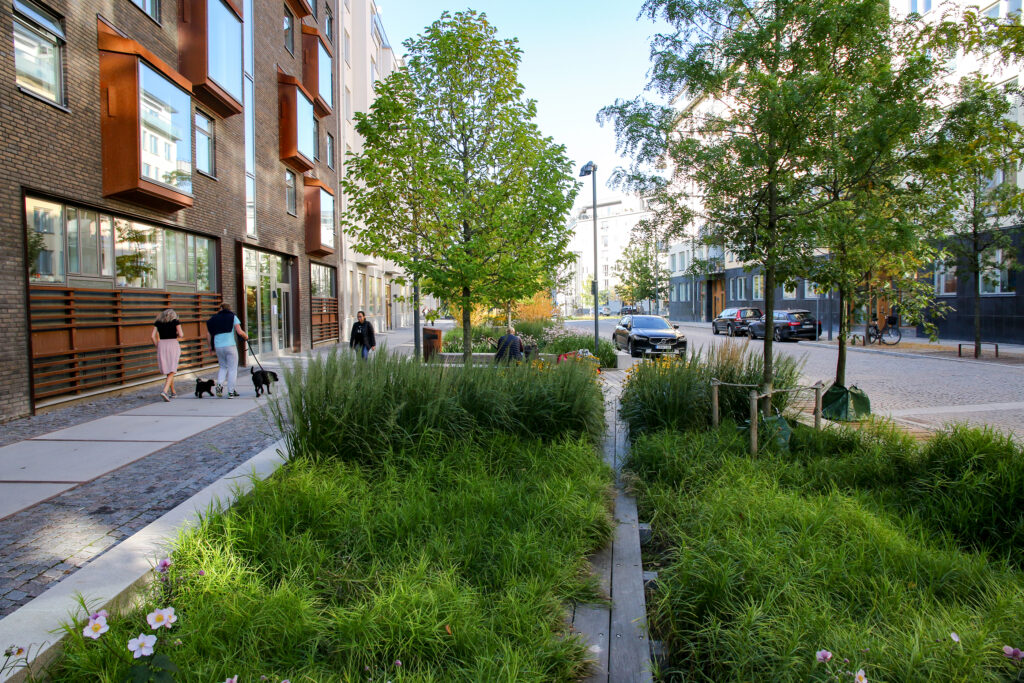Editorial: The Perimeter Block Alone Does Not Guarantee a Lively Urban Environment

From the archive: In issue 4/2002, the Finnish Architectural Review presented Eric Adlercreutz’s housing block design study, which was a follow-up to the winning entry of the Housing Reform competition held four years earlier. According to Adlercreutz, the small blocks with 3–5 floors offered the opportunity to “create a considerably richer and intensive spatial knit compared to present-day multi-storey blocks”. The residential block, which was built based on the concept in the Etelä-Hermanni district in Helsinki, was presented in issue 2/2008.
Perimeter block, open block, courtyard block, super block, tower block, green block. The list could easily go on for a whole page. The city block has been the basic unit of urbanism for thousands of years, from which countless variations have been developed in different countries and in different eras.
The English term city block, like its archaic Finnish equivalent neliö (square), refer to the long-cherished ideal of the city block as a regular and uniform volume, even though city blocks usually consist of several plots. An extreme example of this is the Rue de Rivoli in Paris, where the classicist façade, articulated with arcades, balconies and cornices, is repeated identically for 13 blocks, stretching for a kilometre and a half. In recent years, a reverse strategy has also been practiced where the facades of the blocks have been sliced into different sections to create the illusion of a smaller plot division than is really the case.
Whereas the outside of the block is part of the public urban space, the interior is the territory of the residents. A sense of community arises naturally in perimeter blocks built around a shared courtyard. In his article, Martino De Rossi analyses how the dimensions of the blocks and the arrangements of the circulation affect the random encounters they enable. Backyards that remain hidden from the eyes of outsiders have sometimes been seen as realms of disease, crime and vice, which is why the modernists of the early 20th century wanted to open the street frontages of the blocks to light, air and control. The perimeter block was practically banned for almost half a century.
In Finland today, the perimeter block seems instead to be virtually the only permitted building option, at least in larger cities. At best, this has resulted in intimate and spontaneous urban spaces with attractive neighbourhood restaurants, but often also in monotonous street ravines without any nature or local services. The perimeter block alone clearly does not guarantee a lively urban environment. In recent years, the increased density of construction has also made the blocks reach greater heights with the help of corner towers and staggered floors. At the same time, the harmonious roof landscape previously aspired to in city block typology has been replaced by picturesque compositions of volumes of different sizes and shapes. In this issue of the Finnish Architectural Review, we hear two views on the construction of tower blocks in the centre of Oulu in recent years.
The next step in the development of the city block will undoubtedly be better consideration of biodiversity. There are already great examples of streets designed as green corridors in other Nordic countries, and the need for ecological connections between courtyards may lead to more open block typology in the future.
In Finland today, the perimeter block seems instead to be virtually the only permitted building option, at least in larger cities.
When the city centre blocks are being redeveloped, it is particularly the post-war buildings that have to give way to new construction. In his article, Olli-Paavo Koponen considers the fate of the commercial and office buildings from the 1950s and 1960s in central Helsinki, and their marginalised role in the history of Finnish architecture, despite the obvious architectural and cultural values of the buildings. In Helsinki, the comprehensive reform of the city centre was carried out mainly within the framework of the established scale of the blocks, unlike in many metropolises abroad, or indeed in smaller Finnish cities. Even today’s urban planners could learn something from this.
In addition to the building area bounded by streets, the block or quarter can also refer to a wider administrative or social entity. In their article, Hanna Tyvelä and Erica Åberg write about how rap music describes the experiences of young people with immigrant backgrounds in their own living environment. In many languages, the term quarter is a synonym for a neighbourhood or a city district. The concept is derived from the Latin word quartus, which was applied in Roman cities divided into four equal parts by the perpendicular main streets.
The projects presented in this issue of the Finnish Architecturel Review describe different forms of urban infill building. In Oulu, a former harness factory has been converted into apartments supplemented with new buildings in the corners of the block. In Helsinki, two residential buildings have been built in the courtyard of a large perimeter block in Kruununhaka, and a new corner building has been added to a city block in Kallio. While the former seeks inspiration from the anonymous construction of urban courtyards, the latter refers to the classicist urban architecture of the 1920s in a literal way that is rare in Finland. In Puotila, a new primary school has been built as part of the renewal of the suburban centre, firmly demarcating the edge of area’s busiest public space next to the metro station. The interior of the school, implemented with the recently popular life-cycle model, comprises a children’s city consisting of blocks, alleys and squares – as if referring to Leon Battista Alberti’s classic analogy, according to which a city is a large house, and a house is a small city. ↙




